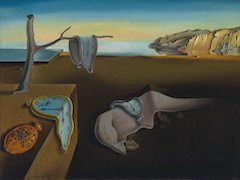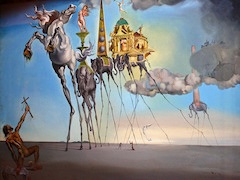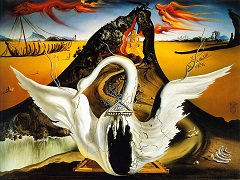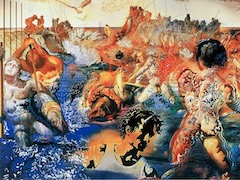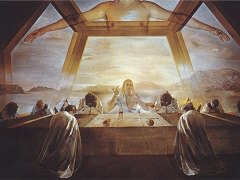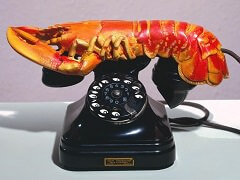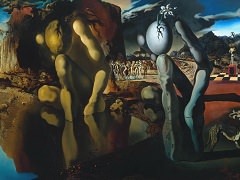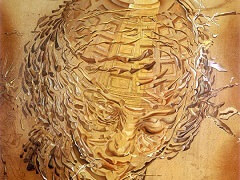The Basket of Bread, 1945 by Salvador Dali
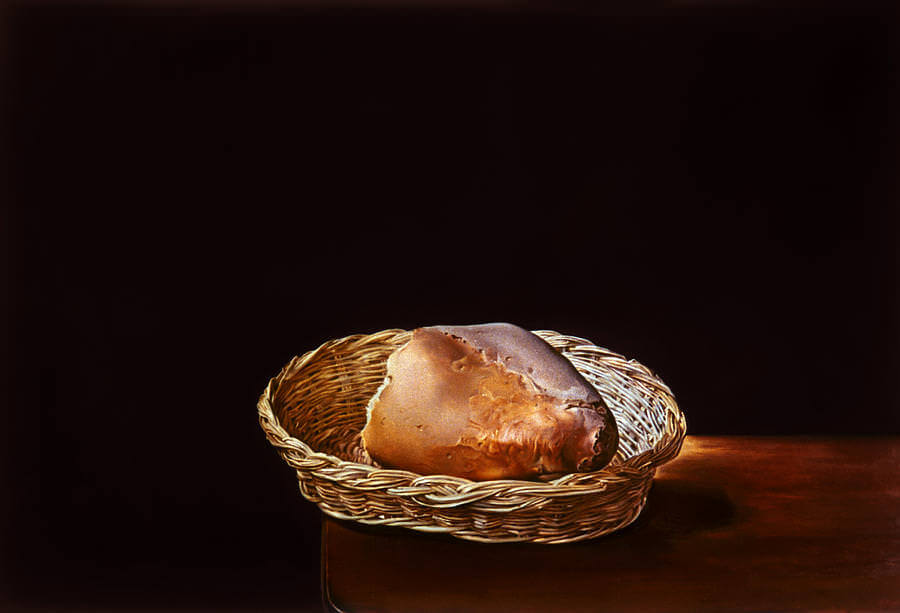
In 1941 Dali announced that he intended 'to become classic', a development foreshadowed by his study of Italian Renaissance artists, and one which perhaps reflected a feeling that he had exhausted psychic autobiography. Dali has used bread in many of his paintings, he explains:
Bread has always been one of the oldest subjects of fetishism and obsession in my work, the first and the one to which I have remained the most faithful. I painted the same subject 19 years ago. By making a very careful comparison of the two pictures, everyone can study all the history of painting right there, from the linear charm of primitivism to stereoscopic hyper-aestheticism."
The subject had been tackled by Dali 20 years earlier, attracting him partly because of its affinities with the work of admired Spanish masters such as Diego Velazquez. Here it also foreshadows Dali's ventures into religious painting from the 1950s. From this time he turned increasingly to the outside world as a source of inspiration, although he continued to interpret it in 'paranoiac-critical' fashion. Unlike most pioneers of modern art, Dali had always produced highly finished works, and in the 1940s his style approximated still more closely to the 19th-century 'academic' ideal, widely regarded at that time as utterly outmoded.

